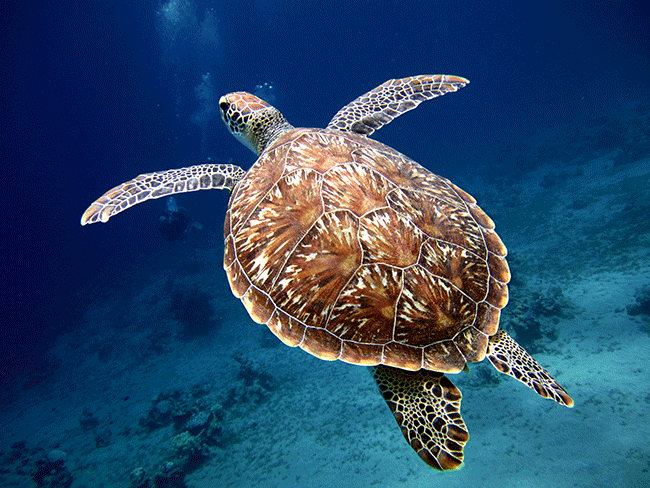The Problem
The oceans of the world are overloaded with plastic. Plastic bags, drink bottles, wrappers, microbeads, pellets and a wide range of other synthetic debris are choking our oceans and causing untold damage to marine environments.
Damning evidence of the extent of the problem came to light when Captain Charles Moore discovered the Great Pacific Garbage Patch in 1999 – a massive floating island of plastic and other debris in the Pacific Ocean. Since then, some attempts have been made to address the problem of plastics in our oceans through organised beach clean-ups, education campaigns and heavier fines and penalties for polluting. Despite this, not much has changed on a global scale and the problem continues to worsen.
Around 300 million tons of plastic are produced and discarded every year. Of this amount,5 trillion pieces are estimated to be floating around in our oceans (enough to fill around 600 jumbo jets). And, because plastic takes a very long time to break down, these numbers will only multiply over time.
The Damage
Apart from being an eyesore, plastic in our oceans has a devastating effect on marine organisms and environments. Some examples include:
- Sea turtles swallow plastic bags because they look like jellyfish and either choke or starve to death.
- Diving sea birds swallow floating plastic pellets because they look like fish eggs and feed them to their chicks, which often die as a result.
- Dolphins, seals and other marine animals become entangled in discarded fishing nets and can die a slow and painful death.
- Plastics absorb organic pollutants in seawater including PCBs, and DDT and pass them on up the food chain, ultimately to humans.
- Plastics facilitate the spread of invasive species which hitch a ride on them to colonise other ecosystems.
The Solution
Luckily, amidst all this doom and gloom, a glimmer of hope has emerged. A 21-year-old Dutch entrepreneur and environmentalist named Boyan Slat has developed a marine trash collector which his organisation The Ocean Cleanup plans to launch in the first half of 2016.
Dubbed “the largest cleanup in history”, the technology is believed capable of cleaning the world’s oceans of plastic and garbage in just a few years. The first stage is set to be deployed off the coast of Tsushima, an island between Japan and South Korea, where there is a huge marine pollution problem.
The trash collector is a 2,000 metre long network of floating barriers (the longest floating structure in history) which will collect plastic and other floating debris as the ocean currents move through it. This waste is then removed via conveyor belts to be re-processed on land.
Slat believes this technology is approximately 7,900 times faster and 33 times cheaper than other cleanup methods. He plans to study the effectiveness of the technology over two years of operation after its launch this year. Following this, the plan is to deploy a 100 kilometre long system between Hawaii and California, which could effectively clean up almost half of the Great Pacific Garbage Patch within ten years.
The Inventor
The Boyan Slat story makes for inspiring reading. At the age of 19, he dropped out of his Aerospace Engineering studies to start his non-profit organisation The Ocean Cleanup and to develop the trash collector.
After collaborating with an international team of one hundred scientists and engineers, the concept was declared technically feasible and financially viable, allowing Slat to raise around $2.2 million through crowdfunding to get the pilot phase under way.
Boyan Slat has since been recognised globally for his ground-breaking work. He was named one of the 20 Most Promising Young Entrepreneurs Worldwide, crowned 2014 Champion of the Earth by the United Nations, awarded the maritime industry’s Young Entrepreneur Award and included in Foreign Policy Magazine’s 2015 list of Global Thinkers.
The Future
Assuming that Boyan Slat’s ambitious plan is successful – and we can effectively clean the world’s oceans in just a few years – the question remains ‘What happens then?’. We are still producing plastics at an alarming rate and, unless something is done to stop it, these plastics will continue to find their way into our waterways and ultimately into our oceans.
Hopefully The Ocean Cleanup will lead to new technologies that will allow us to economically filter debris from the ocean on an ongoing basis, but a better solution would be to prevent it from getting there in the first place.
Short of banning all plastics, which is highly unlikely due to their myriad of uses, the solution could potentially lie in modifying the way we use plastics as consumers. For example:
- Choosing canvas or hemp bags rather than plastic shopping bags
- Refilling water bottles from the tap
- Using glass instead of plastic bottles and containers
- Recycling the plastics we must use
- Using an electric rather than disposable razor
- Using food storage containers instead of glad wrap
- Buying in bulk and avoiding unnecessary packaging
- Buying refills and refilling plastic containers
- Using washable cloth nappies rather than disposables.
These might seem like small steps for a big problem but, if everyone took conscientious action, we could collectively reduce the amount of plastics making their way into our oceans. This, alongside the help of innovative technologies like Boyan Slat’s marine trash collector, could go a long way in protecting and improving the health of our oceans for generations to come.





